The images on this page and others available in the Agriculture & Food Industry gallery depict workers who received wages for their work in ranching, farming and related agribusiness.
In the Northwest Territories, then including Saskatchewan, farm settlement was preceded by large scale investor-owned ranching operations, such as the 10,000 acre 76 Ranch, established in 1887 near Gull Lake. These vast ranching operations provided employment to many hired cowboys and ranch hands. The bitter winter of 1906-07, in which thousands of cattle died of starvation, as well as the sale of grazing land to grain farmers, contributed to the demise of these ranching outfits or to their downsizing to more modest family owned and operated ranches which required less hired labour.
At the turn of the 20th century southern Saskatchewan was flooded by a wave of settlers, attracted by the hope of free or cheap agricultural land, and the promise of jobs at high wages. Most of the agricultural settlers envisioned themselves as independent, if small scale, agricultural entrepreneurs, who would provide the capital, direction, and much of the labour to realize a profit from their farms.
In practice, prairie farming in the horse-drawn era, before the advent of mechanized tractors, combines, and trucks, was very labour intensive and often nearly impossible for many without hired help. This was particularly true during the spring planting and fall harvesting seasons. The labour problem was partially addressed by the employment of travelling threshing crews and the employment of thousands of harvesters who were brought to the west each fall under the sponsorship of the government and railway companies.
For the remainder of the year many farm owners depended upon the work of hired men, who received room and board in addition to their wages. Farmers often complained of the difficulty in finding dependable and hard working hired men and of the cost of paying them during their less busy winter months. Opinions differ on the social status of hired men. Some accounts indicate that they were exploited and that their essential contributions were begrudged by farmers. However in some cases hired men were employed by the same farmer over many years and enjoyed a near family status.
Provided here are three accounts of the hired man in fact and fiction, one by John Diefenbaker, Canada's 13th prime minister, one by prairie novelist W. O. Mitchell and one by Paul Hiebert, the decidedly tongue-in-cheek creator of Sarah Binks, the Sweet Songstress of Saskatchewan.
Off the farm many workers depended upon the agricultural industry for employment. The trade of farmers was keenly sought by merchants and building contractors. The storage, marketing, and transportation of grains became a major Saskatchewan industry, the most important player being the Saskatchewan Wheat Pool, the farmers' cooperative established in 1924.
The very extensive records of the Pool have been preserved by the University of Saskatchewan Archives. These records include thousands of photographs and extensive video documentation of the work of its employees produced over more than a half century. Included are images of the clerical staff at the Regina main office and of the elevator agents it employed in most communities. Also included are photographs documenting the building of its elevator system, the production of its farm publication The Western Producer, and of the work of its several agribusiness subsidiaries that added value to the farmers' production.
Many of the early successful manufacturing businesses in Saskatchewan were based on the processing of agricultural products. Large flour mills were established in several communities and slaughtering and meat processing became a major industry fostered by entrepreneurs Fred Mendel and Pat Burns. These plants were generally unionised. Many also found work in poultry and fish processing plants, and at creameries, breweries and beverage manufacturing plants.



![Threshing Crew, ['ca. 1890s']](cropthumbs/R-B11752.jpg)
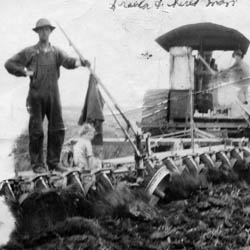
![Indian Farm Labourers, ['ca. 1923']](cropthumbs/PH-91-8.jpg)

![Filleting Plant Employees, ['21 June 1946']](cropthumbs/2008-32-6-23.jpg)

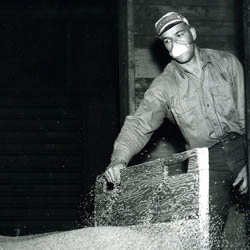
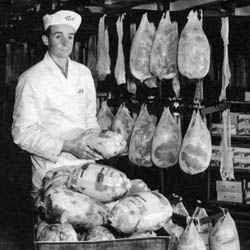
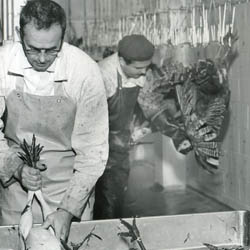
![Saskatoon Dairy Pool Employees, ['ca. 1948']](cropthumbs/B-775.jpg)
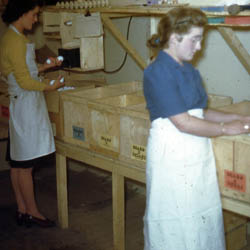
![Woman Working in the Horse Meat Plant <br /> in Swift Current, ['195-?']](cropthumbs/S-MN-B1225.jpg)